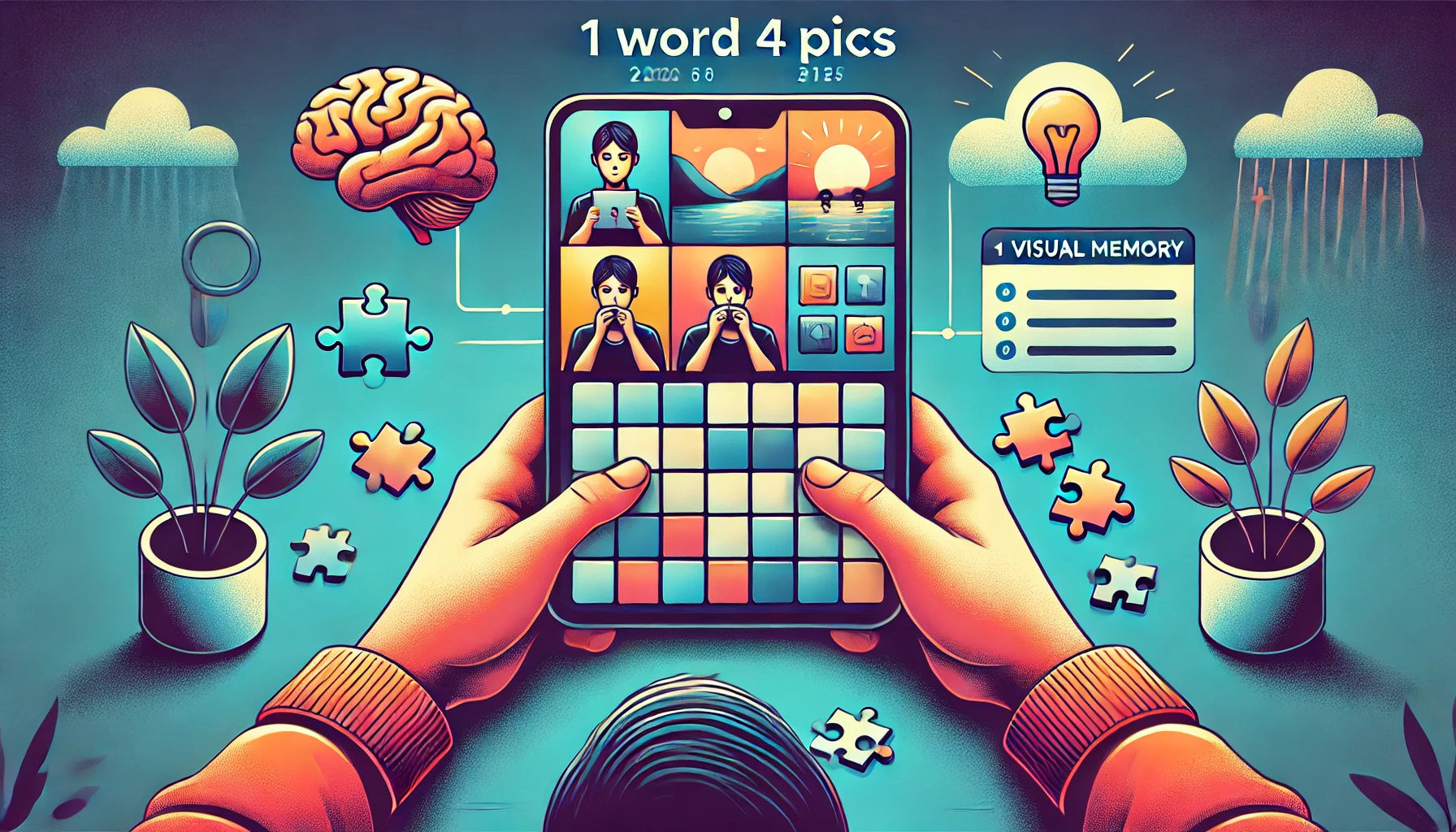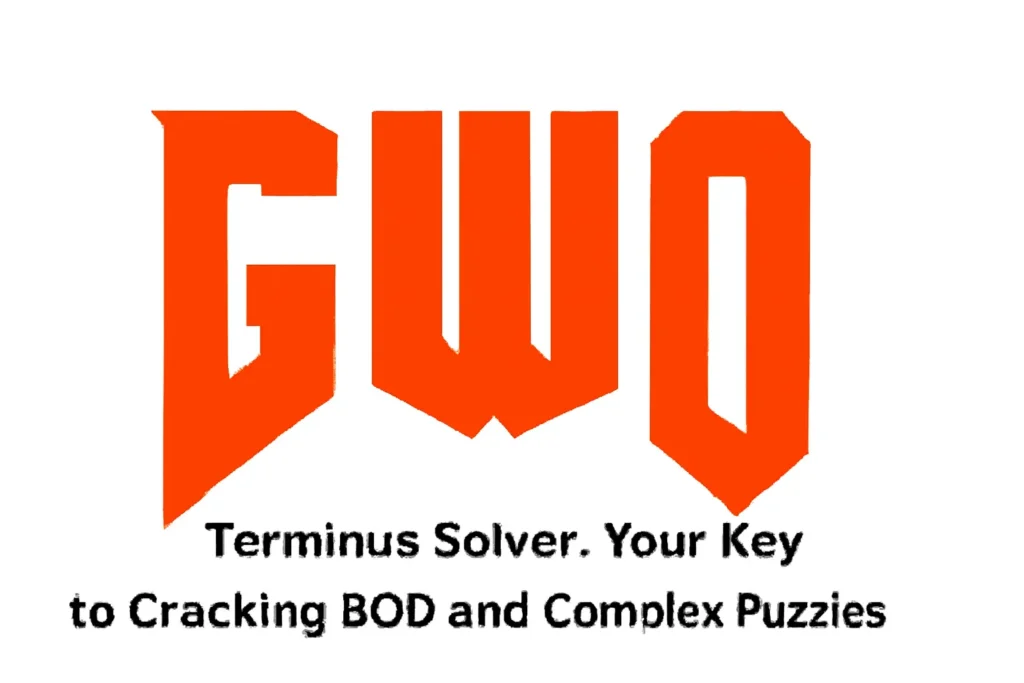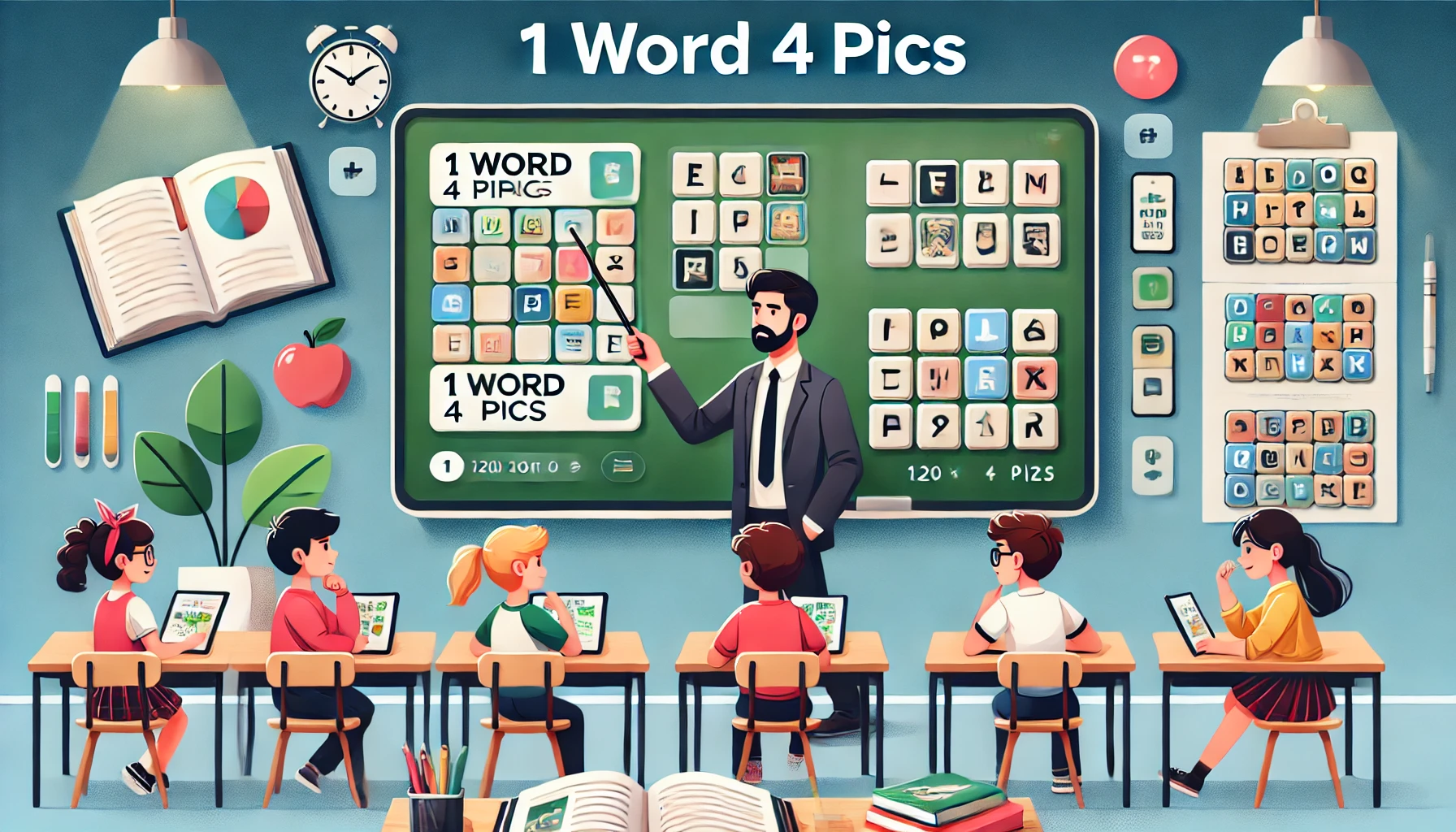Now Reading: The Role of Visual Memory in Solving 1 Word 4 Pics Puzzles
- 01
The Role of Visual Memory in Solving 1 Word 4 Pics Puzzles
The Role of Visual Memory in Solving 1 Word 4 Pics Puzzles

1 Word 4 Pics puzzles are renowned and extremely popular as they are rather engaging and entertaining. They do so by inviting players to apply their skills, on the one hand, with regard to the ability to perceive what may be called patterns and associations between images, and on the other hand, by utilizing their memory skills.
The beauty of these puzzles lies in understanding how four different-looking pictures are united in one word. However, a significant mental skill lies at the centre of resolving these puzzles: visual memory. This article will discuss the importance of visual memory in solving the puzzle game 1 Word 4 Pics, explaining what it is and the reasons behind its success in solving the puzzles.
Understanding “1 Word 4 Pics” Puzzles
Before proceeding to the relevance of using visual memory, first, have a brief overview of what these puzzles entail. In most instances, one-word 4-pics puzzles have four distinct pictures that have one thing in common. The player’s mission is to guess the word that connects all four pictures. The four images could be a sun, a beach, a towel, and sunglasses. The right representation in this instance would be the summer. The difficult part is also to immediately recognize the connection between these images and reduce the options.
The Basics of Visual Memory
Visual memory is the ability to retain visual memory and information in the form of images, scenes, and patterns. It is this memory that enables individuals to recall things they have already seen before and apply them in new visual patterns to understand the visual information presented thereafter.
To solve the problems in the game called “1 Word 4 Pics,” visual memory is one of the most important functions since it allows the players to:
- Identify patterns:
This is the ability of the player to identify the pattern existing in the previous incidents or similar cases.
- Remember pertinent images:
Some images can be recalled by players who have already heard or read the word or idea, thereby accelerating the solving of the puzzle. Essentially, the better the visual memory, the easier it is to correlate pictures and words within such kinds of puzzles.

How Visual Memory Enhances Puzzle-Solving?
1. Swift Pattern Recognition
To make the solution of the puzzles in the game of “1 Word 4 Pics” easy, you need to find a common denominator between the pictures in as short a time as possible. Visual memory assists players in recognizing patterns in images, even when they may not be apparent at the moment. One good illustration of this is when the photos do not directly represent a word but convey its meaning, such as one picture of a child playing with a ball, another photo of a school, and a third of a classroom. Although the fourth image may be a playground, the sight memory may assist the solver in drawing these pictures together and usually recalling some other similar puzzles.
2. Leveraging on the Productions of the Past
In solving puzzles, people most often use their visual memory to recall images or patterns from earlier puzzles. This experience helps them identify the word more quickly. For example, when certain pictures are used on puzzles that a player will see regularly, such as those of animals, they will begin to develop speed in recognizing animal-related themes and make quicker decisions.
3. Fastness and Performance
Among the most important benefits of an excellent visual memory is the ability to solve puzzles quickly. When you have a great visual memory, it comes automatically to know that the association of images is correct. Consequently, they can solve puzzles more effectively, and, as a rule, can solve them faster, spending significantly less time on them than any other people.
How “1 Word 4 Pics” Puzzles Challenge Visual Memory
The “1 Word 4 Pics” puzzles are neither simple tests of memory to recall visual details, but rather, they demand the gamer’s ability to notice the relationship between images that are unrelated to each other. In many cases, these images in the puzzle do not relate directly to the word but are instead symbols, representations, or metaphors.
1. Ambiguous Images
Often, the pictures used in these puzzles are abstract and metaphorical, and the player must extend their thoughts beyond the literal. This may pose a problem for visual memory because the solver will have to consider a large number of relations. For example, a mountain, an airplane, and a flag could convey the concept of adventure. Upon solving, the solver uses visual memory to navigate these abstract relationships, drawing on his past experiences with similar puzzles.
2. Shortage of Time for Analysis
Not all 1 Word 4 Pics puzzles are timed, which can create a sense of urgency that strains visual memory. It is a quick-conclusion game where players must study the images and remember any associated details, all within a time constraint. This confirms the difference made by having a well-trained visual memory, as it helps to emerge successful in these challenges.
3. Cyber Image Categories Varied
The pictures in the one-word four-picture puzzles can depict objects, locations, feelings, or actions. This diversity demands more players so that they can relax their visual memory and draw on other forms of knowledge and experiences. Visual memory is beneficial since it enables solvers to recognize and link items from various categories and form a complete word.
The Science Behind Visual Memory in Puzzle-Solving
The process of remembering and recognizing images can be described as a brain capability, particularly in the occipital lobe and the temporal lobe. The occipital lobe processes visual stimuli, whereas the temporal lobe aids in the recognition and recall of images. These are different parts of the brain that collaborate to form a unified memory system capable of storing, retrieving, and utilizing visual information.
When doing puzzles, the visual memory system of the brain enables us to reform, make interpretations and pair images with ideas stored in the brain. To the extent that you practice these puzzles, the more such links become second-nature to you, and the less energy you have to expend on identifying patterns and links.
Tips for Improving Visual Memory for Puzzle-Solving
Although visual memory is essential to crack the “1 Word 4 Pics” puzzle, it is also an acquired skill that can be honed with practice. The following are some of the tips on how to improve your visual memory:
1. Practice regularly.
The most effective measure for strengthening visual memory is to practice it. When you solve more visual puzzles, the better your memory becomes. “1 Word 4 Pics” puzzles can be the best instrument in this aspect since they also offer you a chance to practice memory-building skills in matching pictures with words.
2. Analyze pictures:
Breaking down images. When you find yourself confronted with a tricky puzzle, attempt to subdivide the images into smaller ones. To illustrate, when the pictures show a tree, a sun, a dog and a ball, consider trying to cast your eyes on each object separately (tree = nature, sun = summer, dog = pet, ball = toy) and how they could have a connection.
3. Practice using Visual Memory Games
Several applications and games are available, aimed at enhancing visual memory. Such games can be used to enhance your memory skills for pictures and improve cognitive performance. Regular playing of these games will exercise and lubricate your visual memory.
4. Memory Techniques
Make an effort to use mnemonics or visualization to enhance your memory. For example, you may attempt to attach the pictures in a 1 Word 4 Pics puzzle to a mental story or a special word. This is likely to make it easy to remember the word in the future.
The Role of Context in Visual Memory
Visual memory also depends on context, despite the fact that visual pattern recognition is also considered. As another example, suppose the puzzle being solved is one with a picture of a dog, a ball, a park, and a leash, and think also that the images the player is looking at have considerable context, either in the arrangement of the pictures or his prior exposure to images similar to the ones before him. These images can then play a key role in how fast he is able to relate the pictures to the word walk.
The ability to analyze the surrounding context is also useful in sharpening visual memory because it creates a stronger bond between the images and the words.
How to Build a Stronger Visual Memory for “1 Word 4 Pics” Puzzles?
For those who wish to enhance their puzzle-solving skills, here are some practical tips for improving visual memory:
- Take time to observe: When you’re faced with a “1 Word 4 Pics” puzzle, take a moment to observe the images carefully. Don’t rush through them; look for hidden details and underlying themes.
- Practice with a variety of images: Use different puzzle games and challenges to train your memory on a variety of subjects, from animals and nature to objects and abstract concepts.
- Revisit solved puzzles: Revisiting puzzles you’ve already solved can help reinforce memory patterns and trigger new associations.
Conclusion
Another skill needed to solve the puzzles, such as the 1-word 4-pics, is visual memory. Visual memory is vital in solving puzzles, whether by identifying patterns or by retrieving past experiences or making rapid associations between seemingly unrelated images.
With this skill, which can be learned through practice and improvement, players can master the approach to these puzzles and solve them in a better and more enjoyable way. You will not enhance your visual memory the next day, but with persistent efforts and memory-building tricks, you will be able to have a better idea of how to solve puzzles. It is important to remember that the more you practice solving these puzzles, the closer you will be to achieving such important visual connections.
How can careful visual memory be enhanced most appropriately?
Visual memory is improved most effectively through practice. Visual puzzles, memory games, and deconstructing images into their parts will strengthen your visual memory over time.
How do I get an answer to 1 Word 4 pics puzzles quickly?
Increase speed to solve a puzzle of 1 Word 4 Pics by having better pattern recognition through exercise and visual memory training. Concentrating on resolving the images, giving attention to some associations quickly.
Is 1 Word 4 Pics beneficial to the brain?
Such puzzles are indeed excellent brain games because they enhance the brain and boost its thinking abilities, such as problem-solving, pattern recognition, and visual memory.
What are the mechanics behind the “1 Word 4 Pics”?
The puzzles contained in 1 Word 4 Pics include pictures with a similar theme. It aims to find out the word that unites the four pictures.










